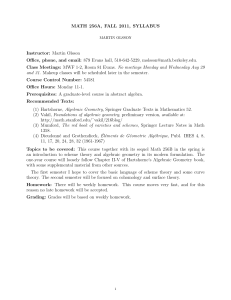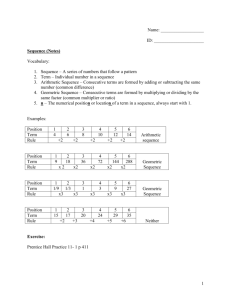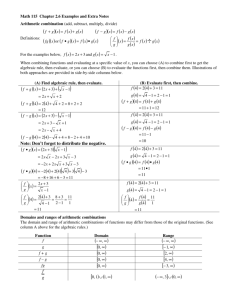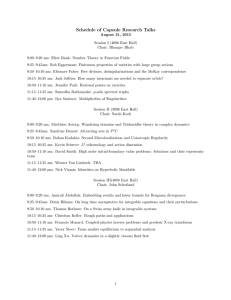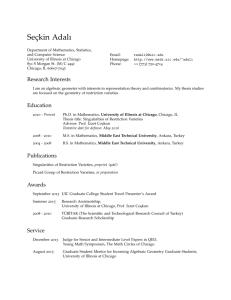A CENTURY OF ARITHMETIC ALGEBRAIC GEOMETRY Anthony J
advertisement
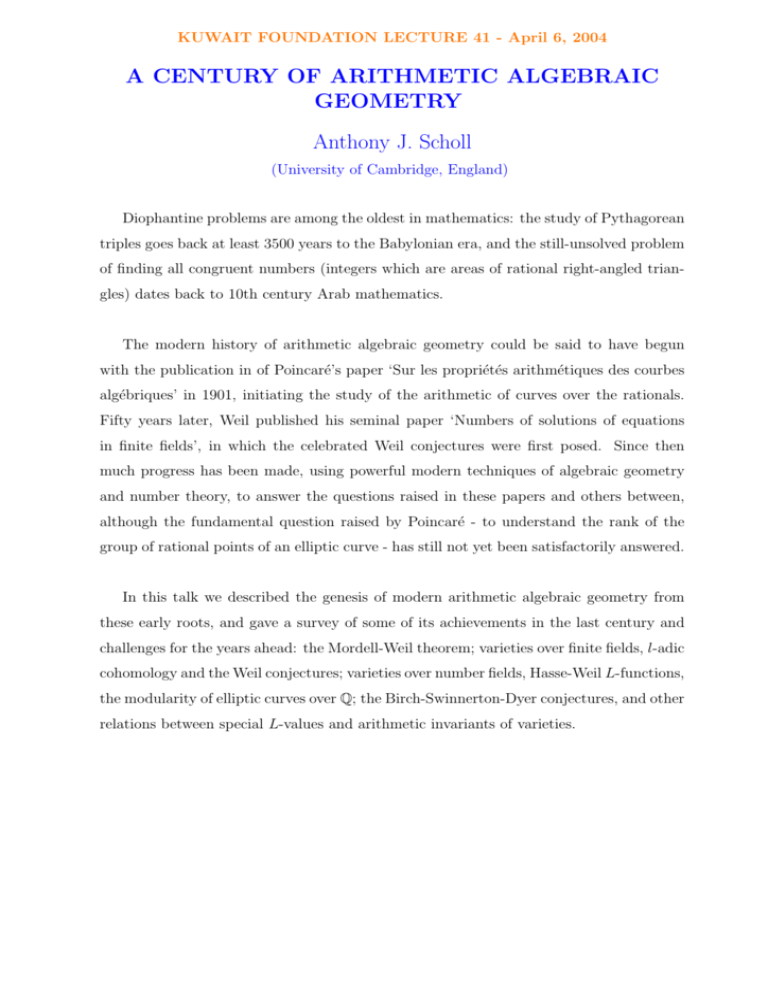
KUWAIT FOUNDATION LECTURE 41 - April 6, 2004 A CENTURY OF ARITHMETIC ALGEBRAIC GEOMETRY Anthony J. Scholl (University of Cambridge, England) Diophantine problems are among the oldest in mathematics: the study of Pythagorean triples goes back at least 3500 years to the Babylonian era, and the still-unsolved problem of finding all congruent numbers (integers which are areas of rational right-angled triangles) dates back to 10th century Arab mathematics. The modern history of arithmetic algebraic geometry could be said to have begun with the publication in of Poincaré’s paper ‘Sur les propriétés arithmétiques des courbes algébriques’ in 1901, initiating the study of the arithmetic of curves over the rationals. Fifty years later, Weil published his seminal paper ‘Numbers of solutions of equations in finite fields’, in which the celebrated Weil conjectures were first posed. Since then much progress has been made, using powerful modern techniques of algebraic geometry and number theory, to answer the questions raised in these papers and others between, although the fundamental question raised by Poincaré - to understand the rank of the group of rational points of an elliptic curve - has still not yet been satisfactorily answered. In this talk we described the genesis of modern arithmetic algebraic geometry from these early roots, and gave a survey of some of its achievements in the last century and challenges for the years ahead: the Mordell-Weil theorem; varieties over finite fields, l-adic cohomology and the Weil conjectures; varieties over number fields, Hasse-Weil L-functions, the modularity of elliptic curves over Q; the Birch-Swinnerton-Dyer conjectures, and other relations between special L-values and arithmetic invariants of varieties.

